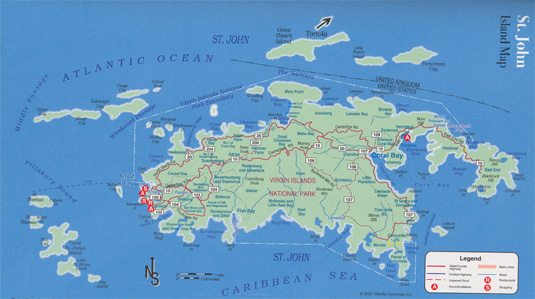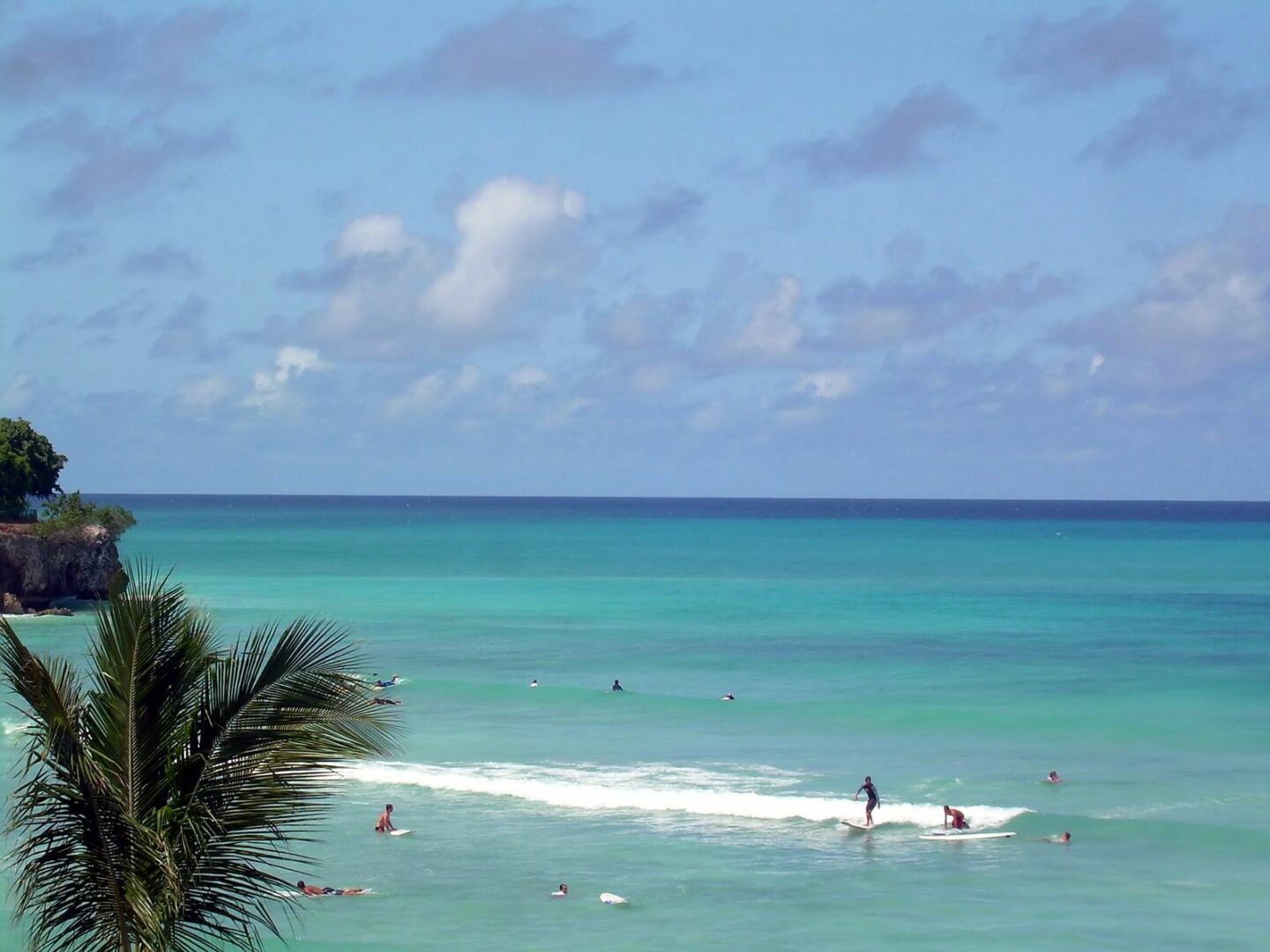ST. John General Tour/Beach Tour

Manual Payment Steps:
Cost: U.S. Currency
Adult: Please check prices in the product description below
Child: Please check prices in the product description below
-
Private Tour Services are available and we offer an installment plan for any surcharges after discounts or promotions have been deducted. Payment in full is always welcomed.
Select Excursion | Calculate | Scan QR -Code | Pay & Send Requested Information Below
Use our QR - Code to process transactions for each island; add all adult and children costs, *subtract 10% off total for groups of 7 or more. In your corresponding email stipulate:
Name of lead traveler:
Cell Number of lead traveler on excursion day: ___.___._____
Emergency Number and name of someone not on tour:
Name Island: ________
Excursion Type: ________
Adults: ______ Child: _______
Date:________ Time: ________
Name of Villa or Cruise Ship: ________
Special Requests: ________
Customer Service
340.642.4343
[email protected]
Description
St. John V.I. General Tour/Beach Tour:
2-2.5 hours
Your tour officially starts in Cruz Bay at 9:30 am and travels through this vast National Park protected island with visits to the Catherineberg and Annaberg Plantations with stops in Coral Bay to look at the British Virgin Islands 2-3 miles away. We definitely will showcase: local flora and the unique colonial history of this island paradise which is referred to as “Love City,” until 11:30 am. Trunk Bay and Caneel Bay views will be seen as they are considered some of the most beautiful views and beaches in the world!
Morning Tour
9:00 A.M. (on this tour schedule you can swim (optional) from 11:30-1:30 +/- have lunch and be back to your ship or locale by 2:00 – 2:30 P.M.)
Afternoon Tour
12:00 P.M. (on this tour schedule you can swim (optional) from 2:30 +/- have a late swim until 3:30 and be back to your ship or locale by 4:00 P.M.
Adults- $75.00
Children (13 years and under) $55.00
(4 years and under Free- 2 maximum per couple)
Non colonial era
+3500 B.C. – early 1500’s: Tribal societies (Ortoiroid (archaic) People, Ciboney, Taino, Arawak, Carib). The close proximity to Central America and the Yucatan and the vast traveling that tribes did for thousands of years put St. John in an enviable position on the routes headed to the South of the Caribbean chain.
1500’s – 1600’s: Diverse and curious Europeans; Spanish and English looking for tribal peoples for slaves
1600 – 1694: Now phasing out of the usual “Indians” that were inhabiting the island of St. John due to genocidal extinction, Pirates; Dutch, Danish, and British colonizers, visiting and leaving at different times.The Danes were visiting St. John (1665- 1694) because of its close proximity to St. Thomas and their desire to colonize and settle it. The Danes found water there and enough resources to find it attractive and encouraging to have a serious go at it. At that time St. Thomas was doing well for them except for their high mortality rate in St. Thomas in the beginning. The Danes were not welcomed to settle St. John, they were constantly driven off by the English in Tortola.
1665: The Danes planted their flag in St. Thomas with the help of a blond skipper by the name of Erik Nielsen Smidt.
1671: Construction of Fort Christian began in St. Thomas.
1672: Denmark took over the island of St. Thomas officially.
1673: Slaves were brought to St. Thomas by the Danes to work in the fields and plantations “day in and day out.”
Colonial Era
1694 – 1718: Denmark was granted permission to settle St. John by the British in 1694. The name St. John was originally Sankt Han by the Danes, however taken from the African Hebrew Semitic name Yohanan. Denmark was a non threatening nation and only had establishments in St. Thomas. Even though they received the permission they needed, they did not pursue the plantation system of agriculture until 1718.
1718: The Danish West India and New Guinea Co.’s settled St. John. They had an official inauguration of their presence and objectives for the island and also was responsible for naming the island Sankt Jan.
1721: 39 deeds were handed out by this time and St. John was a success.
1726: “St. John is now entirely settled, so that there is no more land left to give away except at the Fort and the company’s plantation, which is still lying idle, as it is not surveyed. Next year the greater number of St. John inhabitants will begin paying the poll and land tax. There are already about 20 works built and others in the process of building…”, Governor Moth, to the company directors on March 16th.
1733: The famous slave uprising that started at the Fortsberg Fortress on Leinster Bay spread throughout the island and was the first successful slave rebellion. The African slaves held the island for six months until the French came from as far away as Martinique to assist the Danes in recovering the island. The French had recently sold St. Croix to the Danes in that same year. They offered the slaves pardons to trick them to come out of hiding and then they killed them. Many had already committed suicide with the belief that they would go to heaven or some place better than what they had alive.
1754: The Danish Crown took control of all three islands plantations in the Danish West Indies: St. Thomas, St. Croix, and St. John.
1773: Boston Tea Party occurred; The British were placing taxes on the tea as a last resort to maintaining a push back against tax exemptions, and it started a revolt, through the destruction of the tea by dumping it into the ocean. .
1776: Sugar cane and all of its by products were doing so well that it would have been difficult to realize that there was such a successful rebellion in 1733. It took years to get planters to sign on to St. John again.
1776: American Revolution
1805 and 1806: Great fires burnt down much of Main St. Dronningens Gade
1825-26: Great fires burnt down areas in Savan, and the original Catholic Church edifice, the current Saints Peter and Paul Catholic Church (ca.2008) was built between 1845 – 1848. The building codes were changed and required building with rubble stones and bricks.
1848: Slavery was abolished all over the Danish West Indies on July third but was not officially read in St. John until the 5th of July.
1864: Smallpox and dengue fever were widespread in the British islands and entry into Tortola was prohibited. The islands were put under quarantine to help stop the spread and fears that were brewing.
1872: The capital of the Virgin Islands was moved from St. Croix to St. Thomas.
1917: The United States of America Pays $25,000,000.00 worth of gold to Denmark for the entire Danish West Indies (four islands and approximately 46 cays) on March 31. This deal took a period of 51 years and several offers on both sides before the sale was accomplished. America wanted a location in the Caribbean to secure the region with most of their concerns on Germany and their intentions. The Panama Canal was an opening that could have been a weak spot and they were not going to take any chances. America was interested in Santo Domingo (Hispaniola) and Cuba as well.
Germany went on to start World War II. Germany also wanted to have a presence in the Caribbean and did; the Germans leased out large portions of St. Thomas between 1685 and 1718 through the Brandenburg African Co. involved in the Triangular Slave Trade and had headquarters here for their German-American Hamburg Lines.
They occupied that whole building which is today part of the old Bern Ice Plant and that whole area across and south of Saints Peter and Paul Catholic Church built in 1844 -1848. There were other churches built in that location but were destroyed by fire previously in 1825-26.
Naval Rule Era
Naval Administrators governed the islands
1917-1919: James Harrison Oliver; Rear Admiral of the U.S. Navy administered the Islands.
1920-1921: Joseph Wallace Oman; Rear Admiral of the U.S. Navy.
1921: Cyril E. King was born in the beautiful island of Saint Croix. This man was to become a great leader in the U.S. as well as in the Virgin Islands. This humble and great leader started going to school in St. Croix, attending Catholic schools (St. Ann’s and St. Mary’s) and later in his life he received a degree from the American University in Washington D.C. and many honorary degrees and commendations.
§ He was the first African to work in the office of a U.S. senator when he worked in Senator Humphreys (Minnesota) office from 1949-1961.
§ He was the second elected Governor of the Virgin Islands.
§ Appropriated funds to rebuild the airport’s world war II hanger that was used as a terminal and extended the runway into the ocean.
1921-1922: Sumner Ely Wetmore Kittelle; Rear Admiral of the U.S. Navy.
1922-1923: Henry Hughs Hough; Captain of the U.S. Navy.
1923-1925: Phillip Williams; Captain of the U.S. Navy.
1925-1927: Martin Edward Trench; Captain of the U.S. Navy.
1927-1931: Waldo Evans; Captain of the U.S. Navy.
1927: U.S. citizenship was granted to the people of the Virgin Islands.
Civilian Rule Era
Governors appointed by the U.S. Dept. of the Interior
1931-1935: The first appointed Governor; Paul M. Pearson, was born on Oct.22, 1871and died March 27, 1938.
1935-1941: The second elected Governor; Lawrence W. Cramer, was born on Dec. 26,1897 and died Oct.18, 1978.
1941-1946: The third appointed Governor; Charles Harwood, was born on May 14, 1880 and died on Oct.23, 1950, the Charles Harwood highway was named after him.
1946-1949: The forth appointed Governor; William Henry Hustie, was born Nov.17, 1904 and died April 21, 1976.
1950-1954: The fifth appointed Governor; Morris Fidanque De Castro became the first native born Governor.
1954-1955: The sixth appointed Governor; Arcihbald Alphonso Alexander, was born May 14, 1888 and died Jan. 4, 1958. Archibald was appointed at a very mature age.
1956: Laurance Spelman Rockefeller the conservationist and heir to the Rockefeller fortune donates 5000 + acres (approximately 3/5of the island) to the V.I. National Park Service. He also donates 33,000 acres in the Grand Teton National Park. Serious about saving the environment he was the head of the Citizens Advisory Committee on Environmental Quality from 1969-73. He also sat on many different committees that involved environmental protection. Laurance served in the U.S. Navy during World War II, after co-founding Eastern Airlines. Later on in his life his interests led him to speculate in the hotel and technological industries.
1955-1958: The seventh appointed Governor; Walter Arthur Gordon was born on Oct.10, 1894 and died April 2, 1976 at the ripe age of 81.
1958-1961: The eighth appointed Governor; John David Merwin was the first native born administrator of the Virgin Islands, a sign of things to come. He was born on Sept.26, 1921.
1961-1969: The ninth appointed Governor; Ralph M. Paiewonsky was born on Nov.9, 1907 and died on his birthday on Nov.9, 1991.
§ King was appointed as Government Secretary by John F. Kennedy. This position was the equivalent of the Lieutenant Governors position today.
1969-1970: The tenth and last appointed Governor; Melvin Evans was appointed as Governor after the early resignation of Ralph M. Paiewonsky. Something was very curious about his resignation. He was probably aware of the upcoming elections and the changes that were on the horizon. To save embarrassment he was probably asked to resign.
Self Governorship Era
Term limited elected officials, a supreme court, and a constitution
1970-1974: The first elected Governor; Melvin Evans was elected by the people of the Virgin Islands he was the first person to be elected by the people after 53 years under American rule. Melvin was born on August 7, 1917 and died on Nov. 27, 1984. The time had come for the people to choose their own administrator. Melvin Evans should have been an easy choice because he served the people in that position by appointment of the President previously, but due to Cyril E. Kings popularity won by runoff election.
1974: Second elected Governor; Cyril E. King, was born on St. Croix April 7th, 1921 and died January 2nd, 1978 before he was able to complete his term in office.
1977: Cyril E. King wrote a congratulatory letter to Dawuud N. Nyamekye; formerly David M. Horsford, on his victory as the 25th Prince of Carnival.
1978-1987: Third elected Governor; Juan Francisco Luis was born on July 10, 1940.
1987-1995: Fourth elected Governor; Alexander A. Farrelly was born on Dec.29,1925.
1995-1999: Fifth elected Governor, Dr. Roy Lester Schneider was born on May 13th, 1939. Dr. Schneider was a former Prince of Carnival in St. Thomas and as governor pushed for the hospital to be named after him. An obvious affinity for women of a lighter or white complexion he was viewed by many as being pompous.
1999-2007: Sixth elected Governor; Charles W. Turnbull, Ph.D., was elected.
2002: Governor Charles W. Turnbull was re-elected as the seventh Governor.
2007: Eighth elected Governor; John P. DeJongh was elected, with his running mate and lieutenant Governor, Gregory R. Frances from St. Croix.
Currently: St. John is still preserved and is trying hard to balance paradise and development. The task of maximizing the limited amount of land space; a hot commodity, is daunting. The local government recently had to allocate some of National Park land to build a new school. Architecturally the local homes are very ordinary. The more affluent homes have more interesting and unique designs. Many use the Dutch inspired styles creating a renaissance occurring all over the Caribbean.
Many residents, from all backgrounds, are anti development and believe that the island is losing it’s undeveloped charm.
Historically: St. John has been producing the finest quality Bay Leaves in the World. Noted by botanists, the leaves were used, and still are today, to produce Bay Rum. This is a potential industry that has not received enough attention.
Government: St. John has one Senator (at large). The other two islands, St. Thomas and St. Croix, have seven senators each for a total of fifteen. Under the new constitution these dynamics may change. There is now a growing desire in the community for changes to be made in the legislature. Currently, in the executive branches of government, a Governor and Lt. Governor are elected every four years and fifteen senators in the Legislative Branches are elected every two years. There is also a Delegate to Congress but without voting rights in the House.
Commissioners are appointed by the Governor and are approved by the Legislature. They head Agriculture, Police and Housing, Parks and Recreation, Education, Tourism, Planning and Natural Resources and Public Works.
In the judicial branch, the District Court of the Virgin Islands and the Territorial Court exists.
Population: 4,157
Notes: St. John’s time-line has important information of St. Thomas V.I. , included because decisions made in St. Thomas affected St. John’s history directly.




